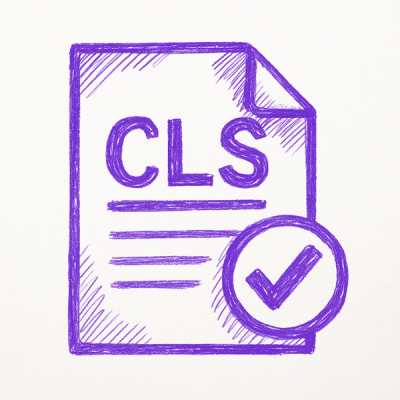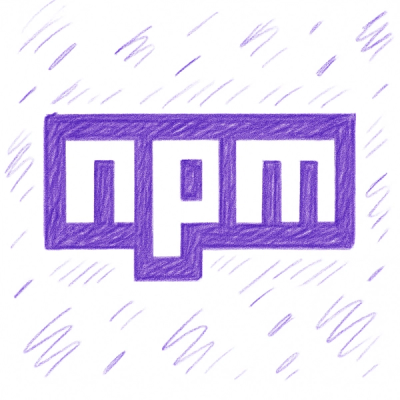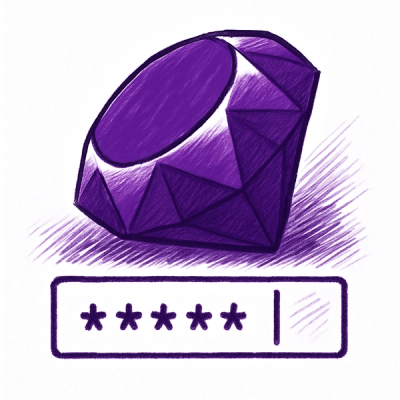
Security News
Opengrep Adds Apex Support and New Rule Controls in Latest Updates
The latest Opengrep releases add Apex scanning, precision rule tuning, and performance gains for open source static code analysis.
A Python library wrapped PJSUA2 C++ interface of pjsip/pjproject using pybind11
A Python library wrapped PJSUA2 of pjproject with pybind11.
Despite pjproject claiming its high-level API interfaces directly support C++, Java, C#, Python, etc. (through SWIG), we found its SWIG scripts is not such friendly to Python, So we decided to "hand-roll" a pjproject high-level API Python language wrapper. Considering pjproject's high-level API is based on C++ with an object-oriented style and is quite complete, we adopted pybind11 for C++ to Python wrapping. Strictly speaking, this is not a "from-scratch" hand-roll, but rather a "semi-automatic" one. It is sufficient for us to carefully manage memory and avoid dangers.
📚 Reference:
https://docs.pjsip.org/en/latest/get-started/posix/build_instructions.html
Windows
This section only records the steps on x86_64 / Windows 10 64bit.
Download and install git for windows, version 2.0 or above.
Download and install VisualStudio 2017 or above (actually developed using VisualStudio 2022), and select "Desktop development with C++" during installation.
Install Python for Windows
If you do not need to debug C++ code and only need to generate dynamic library files, you can directly install Python through the Microsoft Store.
🔖 Tip:
After this installation, you can set the global commandspython,pip, etc., in Windows "Settings" ➡️ "Apps" ➡️ "Apps & features" ➡️ "App execution aliases".
If you need to debug C++ code, there are several installation methods:
Visit https://www.python.org/downloads/windows/ to download the Windows installer and install.
Use winget to install, for example:
winget install --interactive "Python 3.12"
❗ Important:
In the installation interface, select "Custom" installation and check the following options:
- ☑️ pip
- ☑️ py launcher
- ☑️ Download debugging symbols
- ☑️ Download debug binaries If debugging files are not installed, it will be the same as installing through the Microsoft Store. So when using winget installation, note the
--interactivecommand-line parameter to enter the installer's graphical interface and check the above options.
🔖 Tip:
- If "py launcher" is selected during installation, the Python startup command is
py, notpython.- If "Add Python to environment variables" is selected (default unchecked), the Python startup command is
python. But this choice may cause conflicts between different versions, so it is not recommended.- If neither is selected, there is no global Python startup command, and you need to manually set the
PATHenvironment variable to solve this problem.
ℹ️ Note:
The package settings of this project require Python versionrequires-python = ">=3.8", but the actual development process has always used Python 12. It is recommended to use Python 3.10 or above.
(Optional) Download and install CMake (can be installed via winget)
CMake is mainly used in conjunction with IDEs to provide code hints and graphical project management. If not used in conjunction with IDEs, it can be ignored.
Ubuntu 24.04 LTS
Install using apt:
sudo apt install libasound2-dev build-essential cmake pkg-config python3 python3-dev python3-setuptools python3-pip python3-venv python3-pybind11
Among them, libasound2-dev is used to provide ALSA driver support for accessing audio devices.
This section only records the steps on x86_64 / Windows 10 64bit.
Download the latest stable version of pjproject (this project currently uses 2.14.1, strongly recommended to keep consistent).
Record its directory location and set it to the environment variable PJ_DIR.
Refer to https://docs.pjsip.org/en/latest/get-started/windows/build_instructions.html:
pjlib/include/pj, create a new header file config_site.h, this file can be empty (default value), refer to https://docs.pjsip.org/en/latest/get-started/guidelines-development.html#config-site-h;pjsua as the startup project;pjsua project for the above build type and target platform combination. The generated library files are in the lib directory, named like libpjproject-x86_64-x64-vc14-Release-Static;If using MSBuild to build (you still need to use VisualStudio to open to upgrade the solution and project files), execute the project build command in the "Developer PowerShell for VS" or "Developer Command Prompt for VS" command line environment, taking Debug-STATIC | x64 as an example:
MSBuild pjproject-vs14.sln -target:pjsua -m -p:Configuration=Debug-Static -p:Platform=x64
This section only documents the steps on x86_64 / Windows 10 64bit.
During development, you can use either CMake or setuptools for building. The former is mainly used for development and debugging, while the latter is primarily used for packaging and distribution.
🔖 Tip:
Many steps require using pip for installation — this requires internet access! If the official pip repository is too slow, you can use free mirrors from Alibaba Cloud or Tencent Cloud. Example setup:pip config set --user global.index-url https://mirrors.aliyun.com/pypi/simple
Building with setuptools
This method is suitable for scenarios where: C++ code is not modified, only Python Native modules are generated; obtaining artifacts for packaging and distribution; minor modifications to C++ code for simple debugging;
❗ Caution:
- The path to the pjproject directory should be set in the environment variable
PJ_DIR;- If the
PJ_REBUILDswitch is enabled, commands must be executed inDeveloper PowerShell for VSorDeveloper Command Prompt for VS;- This build method directly calls the setuptools script (
setup.py), which requires pre-installing the project's development dependencies (defined in "pjsua2pybind11/requirements.txt") using pip in the current Python development environment. Installation command is provided in the next step;
Install the necessary dependencies for building and packaging this sub-project using pip in your current Python development environment (strongly recommended to use a separate venv as the Python development environment):
pip install -r pjsua2pybind11/requirements.txt
Build
The setuptools script of this sub-project provides several build methods (must be executed in the pjsua2pybind11 directory):
In-place build (recommended method)
Suitable for quick builds after minor modifications to C++ code and rapid generation of native modules required for development.
cd pjsua2pybind11
python setup.py build_ext --inplace
After execution, shared/dynamic library files will be output to the pjsua2pybind11/python directory. On Windows, filenames resemble: pjsua2.cp312-win_amd64.pyd.
Complete build of native parts:
cd pjsua2pybind11
python setup.py build_ext
After execution, only shared/dynamic libraries (this project actually only has shared/dynamic libraries) are generated.
Output directories look like pjsua2pybind11/build/lib.win-amd64-cpython-312
Complete build:
cd pjsua2pybind11
python setup.py build
Since this project only has shared/dynamic libraries, executing python setup.py build is essentially the same as executing python setup.py build_ext.
Output directories look like pjsua2pybind11/build/lib.win-amd64-cpython-312
🔖 Tip:
If pjproject has not been built before building this sub-project, set the environment variable
PJ_REBUILDThis way, when using the setuptools script, it will first build pjproject. Note that you need to open and upgrade the pjproject solution and project files using VisualStudio beforehand.
In this case,
python setup.py ...must be executed in Developer PowerShell / CommandPrompt for VS.For example:
********************************************************************** ** Visual Studio 2022 Developer PowerShell v17.10.1 ** Copyright (c) 2022 Microsoft Corporation ********************************************************************** PS C:\Program Files\Microsoft Visual Studio\2022\Community> cd C:\Repos\softphone\pjsua2pybind11 PS C:\Repos\softphone\pjsua2pybind11> $Env:PJ_DIR="C:\Repos\pjproject" PS C:\Repos\softphone\pjsua2pybind11> $Env:PJ_REBUILD="1" PS C:\Repos\softphone\pjsua2pybind11> cd pjsua2pybind11 PS C:\Repos\softphone\pjsua2pybind11> python setup.py build_ext --inplace
Building with CMake
This method is suitable for developing and debugging with an C/C++ IDE that supports CMake
Install pybind11 and other development dependencies using pip in your current Python development environment (strongly recommended to use a separate venv as the Python development environment):
pip install -r pjsua2pybind11/requirements.txt
Modify the configuration file CMakePresets.json.in to CMakePresets.json according to your local development environment, then call CMake to execute the workflow
For example, modify CMakePresets.json as follows:
/// ...
"configurePresets": [{
"name": "win-vs2022",
"inherits": "default",
"generator": "Visual Studio 17 2022",
"condition": {
"type": "equals",
"lhs": "${hostSystemName}",
"rhs": "Windows"
},
"cacheVariables": {
"PJ_DIR": "D:\\opensource\\pjproject",
"pybind11_DIR": "${sourceDir}/../.venv/lib/site-packages/pybind11/share/cmake/pybind11"
}
}],
/// ...
Modify the "cacheVariables" according to your actual development environment, such as:
"PJ_DIR": Set to the directory of the pjproject source code project
"pybind11_DIR": Set to the CMake script directory of pybind11
After installing dependencies using pip, you can check the CMake script directory of pybind11 with the following command:
pybind11-config --cmakedir
After setting up, execute the CMake workflow, for example:
cmake --workflow --preset win
Or execute step by step, for example:
# configure:
cmake --preset win-vs2022
# build:
cmake --build --preset win-vs2022-release
The generated Python native module target files will be output to the directory pjsua2pybind11/python, with filenames resembling: pjsua2.cp312-win_amd64.pyd
❓ FAQ
Q: How do I specify if I have multiple Python environments on my development machine?
A: This situation is more complex and requires manually filling in CMake variables, which can be specified in the preset configuration file or command line. The variable
Python3_ROOT_DIRdefines the root directory of the Python 3 installation to be used, for example:cd build cmake -DPJ_REBUILD=yes -DCMAKE_BUILD_TYPE=Debug -Dpybind11_DIR="$(pybind11-config --cmakedir)" -DPython3_ROOT_DIR="C:\Program Files\Python 3.10" ..
FAQs
A Python library wrapped PJSUA2 C++ interface of pjsip/pjproject using pybind11
We found that pjsua2-pybind11 demonstrated a healthy version release cadence and project activity because the last version was released less than a year ago. It has 1 open source maintainer collaborating on the project.
Did you know?

Socket for GitHub automatically highlights issues in each pull request and monitors the health of all your open source dependencies. Discover the contents of your packages and block harmful activity before you install or update your dependencies.

Security News
The latest Opengrep releases add Apex scanning, precision rule tuning, and performance gains for open source static code analysis.

Security News
npm now supports Trusted Publishing with OIDC, enabling secure package publishing directly from CI/CD workflows without relying on long-lived tokens.

Research
/Security News
A RubyGems malware campaign used 60 malicious packages posing as automation tools to steal credentials from social media and marketing tool users.